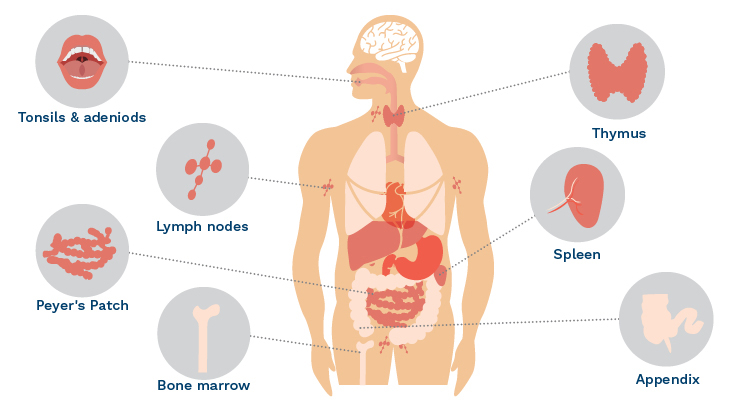Our immune system is an intricate network of cells, tissues and organs that all work together, to defend the body against attacks by “foreign invaders”.
These foreign invaders can be small infection producing organisms such as bacteria, viruses, parasites and fungi. The human body is a warm welcoming environment for many microbes so they attempt to invade, it is our immune system's job to either keep them out, or to seek them out and destroy them. Our immune system is very smart, it can recognise millions of enemies, and can produce special secretions to wipe them out.
Its success, however, relies on communication between our cells. A healthy immune system is able to distinguish the difference between the body’s own cells and foreign cells so it can work out who is the enemy and who is not.
When the immune system is not working correctly and is not recognising its own cells from the foreign invaders, it may attack its own cells. This is when autoimmune conditions such as rheumatoid arthritis and lupus develop.
The first barrier
Our skin is our first powerful barrier, it is tough and if not broken is generally impermeable to bacteria and viruses.
This is why when you have a cut or injury it is a lot easier to get an infection or other illness, as the first line of defence is already down.
The immune system
The second line of defence is our immune system. The organs of the immune system are positioned throughout the body. They include the tonsils, adenoids, lymph nodes, lymphatic vessels, thymus, spleen, appendix, lymph nodules in the ileum (which is the lower part of the small intestine) and also in our bone marrow.
The “warriors” of our immune system are our immune cells (lymphocytes). All immune cells begin as immature stem cells in the bone marrow and once they leave the bone marrow they like to congregate in special compartments called lymph nodes. These small, bean-shaped lymph nodes are found in the neck, armpits, abdomen, and groin. Clumps of lymphoid tissue can also be found in the airways and lungs, including the tonsils and adenoids.
The immune cell “warriors” travel from the lymph nodes into the blood stream, do their work and then return back to the lymph nodes, where they are recycled and start the process all over again. They are on constant surveillance and always ready for action.
This part of our immune system is referred to as our lymphatic system.
So how do the immune cells attack?
An antigen is a foreign invader (usually a virus, bacteria or parasite), the body identifies an antigen as an enemy due to its different shaped molecules. Once this enemy is identified, the lymph node has a few different types of immune cells it can use (think of these as different types of soldiers).
These immune cells are referred to as B cells, T cells, macrophages and various others. They all work in different ways.
B cells produce special Y shaped proteins (antibodies) that stick to the germs holding them in clumps. They then warn your body so that macrophages can come along, engulf them and kill them.
T cells are specific for viruses and can either kill the virus directly or can send instructions to the rest of the immune system and let it know the best way to deal with the invader.

When things go wrong
When normal cells turn into cancer cells, their surface molecules may change. If the immune system notices the change and identifies it as an antigen (foreign invader), it launches the body’s defenders including B cells, T cells and macrophages. While the immune system attempts to patrol everywhere hopefully eliminating all cells that have become cancerous, sometimes the system breaks down, becomes overloaded or does not recognise an invader.
An unhealthy immune system cannot distinguish between an enemy and a normal cell, allowing the cancerous cell to reproduce without being attacked. The result of this, is what causes tumours to develop. So it is very important to support your immune system and keep it healthy.
This is a simplified version of how our immune system works for ease of understanding. There are many other types of immune cells and compounds that make up our immune response.